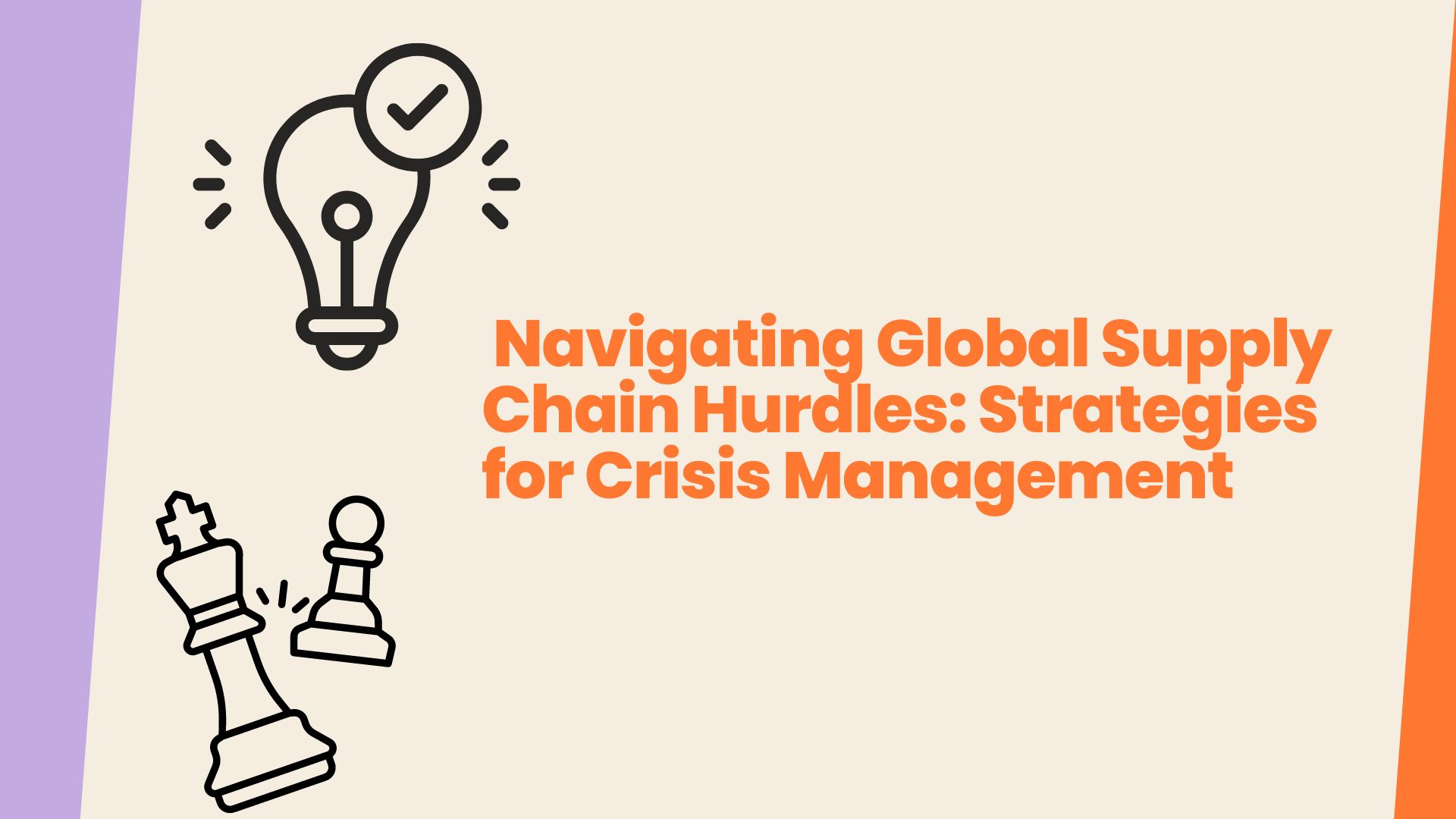In the intricate web of global supply chain management, hurdles are not just commonplace; they are almost inevitable. From unpredictable disruptions like natural disasters to unprecedented events like pandemics, crises can strike at any moment, throwing even the most well-oiled supply chains into chaos. However, adept management and strategic planning can help organizations not only navigate these hurdles but also emerge stronger and more resilient. In this blog, we delve into insights on managing and overcoming common hurdles in global supply chain management, especially in times of crisis.
Understanding the Common Hurdles:
- Disruptions in Logistics and Transportation: Transportation disruptions, such as port closures, carrier delays, or capacity constraints, can severely impact the flow of goods across the supply chain. Events like extreme weather conditions, geopolitical tensions, or accidents can exacerbate these challenges.
- Supplier Reliability and Risk: Dependency on a limited number of suppliers or sourcing from regions prone to instability can pose significant risks. Supplier bankruptcies, quality issues, or sudden changes in regulations can disrupt the supply chain and affect product availability.
- Demand Volatility: Fluctuations in consumer demand, market trends, or sudden shifts in preferences can lead to inventory imbalances, overstocking, or stockouts. Forecasting inaccuracies and inadequate demand sensing mechanisms can further compound these challenges.
- Cybersecurity Threats: With the increasing digitization of supply chain operations, cybersecurity threats such as data breaches, ransomware attacks, or system failures can disrupt operations and compromise sensitive information, leading to financial losses and reputational damage.
Strategies for Crisis Management:
- Building Resilient Supply Chains: Diversifying supplier base, establishing redundant logistics networks, and developing alternative sourcing strategies can enhance supply chain resilience. Collaborating closely with suppliers to assess risks, implement contingency plans, and invest in technologies like predictive analytics can enable proactive risk mitigation.
- Enhancing Visibility and Transparency: Leveraging advanced analytics, real-time tracking technologies, and IoT-enabled sensors can provide greater visibility into supply chain operations. Implementing robust monitoring systems and data-sharing platforms can enable stakeholders to anticipate disruptions, identify bottlenecks, and make informed decisions swiftly.
- Agile and Flexible Operations: Adopting agile manufacturing practices, modular production systems, and flexible capacity planning can enhance responsiveness to changing demand patterns. Implementing demand-driven strategies, such as postponement or customization, can help mitigate inventory risks and improve inventory turnover.
- Investing in Technology and Innovation: Embracing digitalization, automation, and emerging technologies like blockchain, AI, and machine learning can revolutionize supply chain management. Deploying predictive analytics for demand forecasting, blockchain for transparent and secure transactions, and AI-driven algorithms for predictive maintenance can optimize operations and mitigate risks.
- Strengthening Collaborative Partnerships: Building strategic alliances, fostering collaboration, and developing trust-based relationships with suppliers, logistics providers, and other stakeholders can enhance supply chain resilience. Establishing communication channels, sharing information transparently, and conducting regular risk assessments can facilitate effective crisis management and prompt decision-making.
Conclusion:
In the dynamic landscape of global supply chain management, navigating hurdles is not just about mitigating risks but also about seizing opportunities for growth and innovation. By embracing resilience, agility, and innovation, organizations can not only withstand crises but also emerge stronger and more adaptive in the face of adversity. By leveraging advanced technologies, fostering collaborative partnerships, and adopting proactive risk management strategies, businesses can effectively manage and overcome common hurdles in global supply chain management, ensuring continuity and sustainability in times of crisis.









